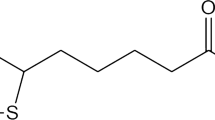Abstract
Hydrophobic substances were dissolved in an organic solvent and emulsified with an aqueous solution at very high shear. Droplets of very small sizes (50–100 nm) were obtained by using surfactants which were combinations of lecithins and bile salts. After emulsification, the organic solvent was removed by evaporation, yielding stable dispersions of solid particles. The sizes, shapes, and structures of the particles were examined through quasi-elastic light scattering, small-angle neutron scattering and cryotransmission electron microscopy. Cholesteryl acetate particles stabilized by lecithin and bile salts were found to be platelets of 10–20 nm thickness and 80 nm diameter. Cholesteryl acetate particles stabilized with POE-(20)-sorbitan monolaurate were dense spherical globules of diameter 100 nm. Particles with a composition similar to the endogenously occurring lipoprotein, LDL, were large spherical globules studded with small vesicles. The subsequent evolution of the Cholesteryl acetate dispersion upon aging was examined. There was no transfer of cholesteryl acetate between particles nor to large crystals. However, some aggregation of the particles was observed when the volume fraction of the particles in the aqueous dispersion exceeded 0.05. Thus, the structure of the nanoparticles obtained through deswelling of emulsion droplets changes according to the nature of the emulsifiers and to the composition of the hydrophobic substances which they contain.
Similar content being viewed by others
REFERENCES
M. Y. Levy and S. Benita. “Design and characterization of a submicronized o/w microemulsion of diazepam for parenteral use” Int. J. Pharm., 54: 103–112, 1(1989)
R. J. Prankerd and V. I. Stella, “The use of oil-in-water emulsions as a vehicle for parenteral drug administration” J. Parent. Sci. Technol., 44: 139–149, (1990)
L. Illum, P. West, C. Washington, and S. S. Davis. “The effect of stabilizing agents on the organ distribution of lipid emulsions” Int. J. Pharm., 54: 41–49 (1989)
M. J. Ostro (ed.), Liposomes. From Biophysics to Therapeutics, Marcel Dekker, New York 1987
S. M. Moghimi, C. J. H. Porter, L. Illum and S. S. Davis. “The effect of Poloxamer 407 on liposome stability and targeting to bone marrow. Comparison with polystyrene microspheres” Int. J. Pharm., 68: 121–126 (1991)
S. H. Yalkowsky (ed.), Techniques of Solubilization of Drugs, Marcel Dekker, New York, 1981
O. Von Dardel, C. Mebius and T. Mossberg. “Diazepam in emulsion for intravenous usage” Acta Anaesth. Scand., 20: 221–224, (1976)
Vanderhoff et al. “Polymer emulsification processes” U.S. Patent 4: 177, 177 (1979)
R. Gurny, N. A. Peppas, D. D. Harrington and G. S. Banker. “Development of biodegradable and injectable latices for controlled release of potent drugs” Drug. Dev. Ind. Pharm. 7: 1–25 (1981)
R. H. Müller. “Colloidal Carriers for Controlled Drug Delivery” CRC press, Stuttgartt (1991)
B. Sjöström, Br. Kronberg and J. Carlfors. “A method for the preparation of submicron particles of sparingly water-soluble drugs by precipitation in oil-in-water emulsions. I. Influence of emulsification and surfactant concentration” J. Pharm. Sci., 82: 579–583, (1993)
B. Sjöström, B. Bergenstahl and B. Kronberg. “A method for the preparation of submicron particles of sparingly water-soluble drugs by precipitation in oil-in-water emulsions. II: Influence of the emulsifier, the solvent, and the drug substance” J. Pharm. Sci., 82: 585–589, (1993)
J. R. Bellare, H. T. Davis, L. E. Scriven and Y Talmon. “Controlled environment vitrification system: an improved sample preparation technique” J. Electron Microsc. Technique. 10: 87–111 (1988)
T. M. Clausen, P. K. Vinson, J. R. Minter, H. T. Davis, Y. Talmon and W. G. Miller. “Viscoelastic micellar solutions: microscopy and rheoology” J. Phys. Chem. 96: 474–484 (1992)
D. Cochin, F. Candau, R. Zana and Y. Talmon. “Direct imaging of microstructures formed in aqueous solutions of polyamphiphiles” Macromolecules, 25: 4220–4223 (1992)
R. G. Laughlin, R. L. Munyon, J. L. Burns, T. W. Coffindaffer and Y. Talmon. “Physical science of the dioctadecyldimethyl-ammonium chloride-water system. 3. Colloidal aspects” J. Phys. Chem., 96: 373–383 (1992)
N. Kamenka, M. Chorro, Y. Talmon and R. Zana. “Study of mixed aggregates in aqueous solutions of sodium dodecylsulfate and dodecyltrimethylammonium bromide” Colloids Surfaces, 67: 213–222 (1992)
S. B. Dubin. Methods Enzymol. 26: 119–174 (1972)
B. Chu. “Laser light scattering” Academic Press 1991
F. Perrin. “Mouvement Brownien d'un ellipsoide I” J. Phys. Radium 5: 497–511 (1934)
F. Perrin. “Movement Brownien d'un ellipsoide II” J. Phys. Radium 7: 1–11 (1936)
B. Jacrot. “The study of biological structures by neutron scattering from solution” Rep. Progr. Mod. Phys. 39: 911–953 (1976)
A. Guinier and G. Fournet. “Small Angle Scattering of X rays” Wiley, New York 1955
O. Glatter and O. Kratky. Small Angle X rays Scattering”, Acedemic Press 1982
B. Cabane. in R. Zana (ed.), “Surfactant solutions: new methods of investigation”, M. Dekker, New York 1987 pp 57–145
M. J. Chapman. “Animal lipoproteins: chemistry, structure and comparative aspects” J. Lipid Res., 21: 789–853 (1980)
A. Walter, P. K. Vinson, A. Kaplun and Y. Talmon. “Intermediate structures in the cholate-phosphatidylcholine vesiclemicelle transition” Biophys. J. 60: 1315–1325 (1991)
Y. Talmon. “Imaging surfactant dispersions by transmission electron microscopy of vitrified specimens” Colloids Surfaces 19: 237–248 (1986)
W. C. Griffin. “Classification of surface active agents by HLB” J. Soc. Cosmet. Chem. 1: 311–326 (1949)
K. Shinoda and S. Friberg. “Emulsions and Solubilization”, Wiley, New York 1986 pp 59–93
Author information
Authors and Affiliations
Rights and permissions
About this article
Cite this article
Sjöström, B., Kaplun, A., Talmon, Y. et al. Structures of Nanoparticles Prepared from Oil-in-Water Emulsions. Pharm Res 12, 39–48 (1995). https://doi.org/10.1023/A:1016278302046
Issue Date:
DOI: https://doi.org/10.1023/A:1016278302046




